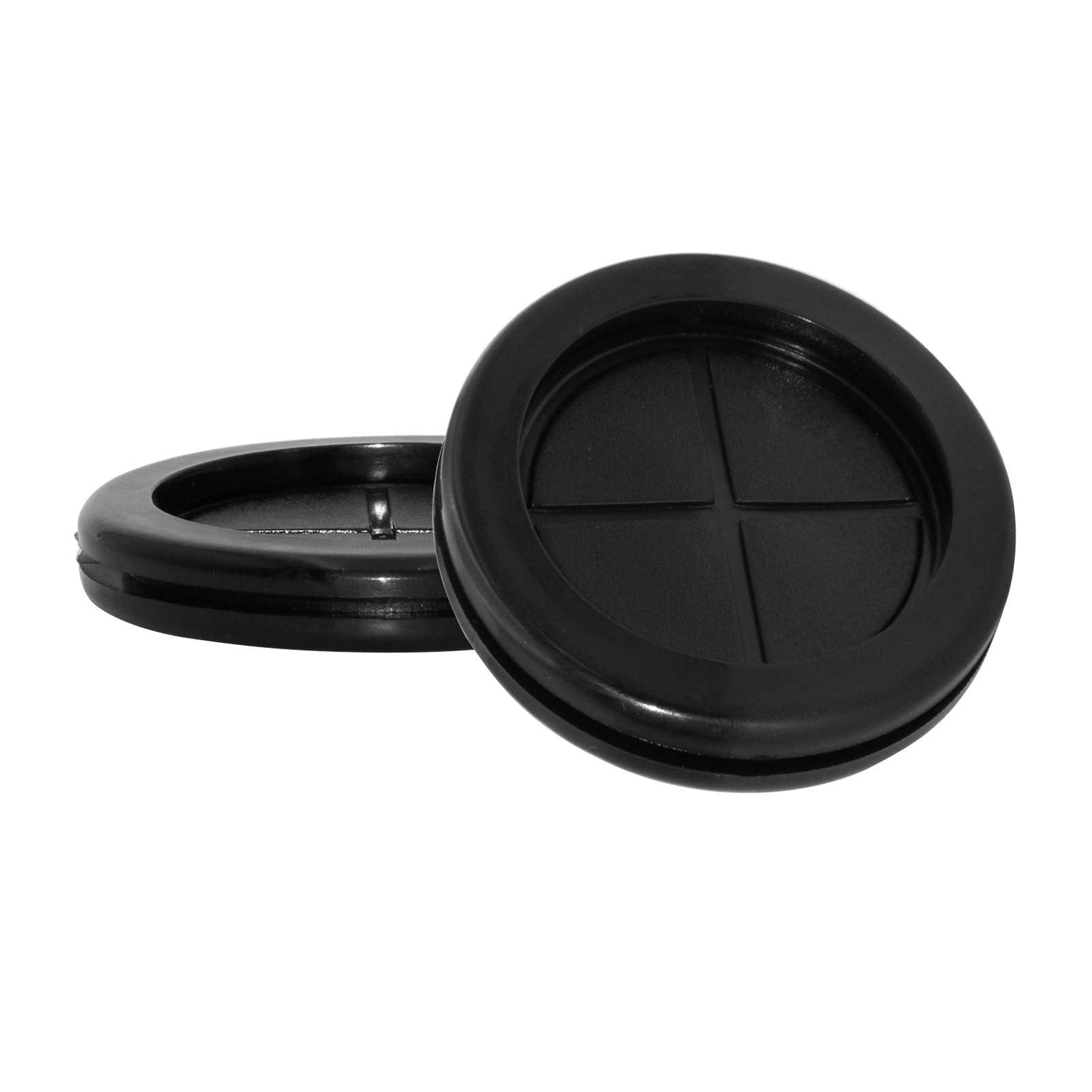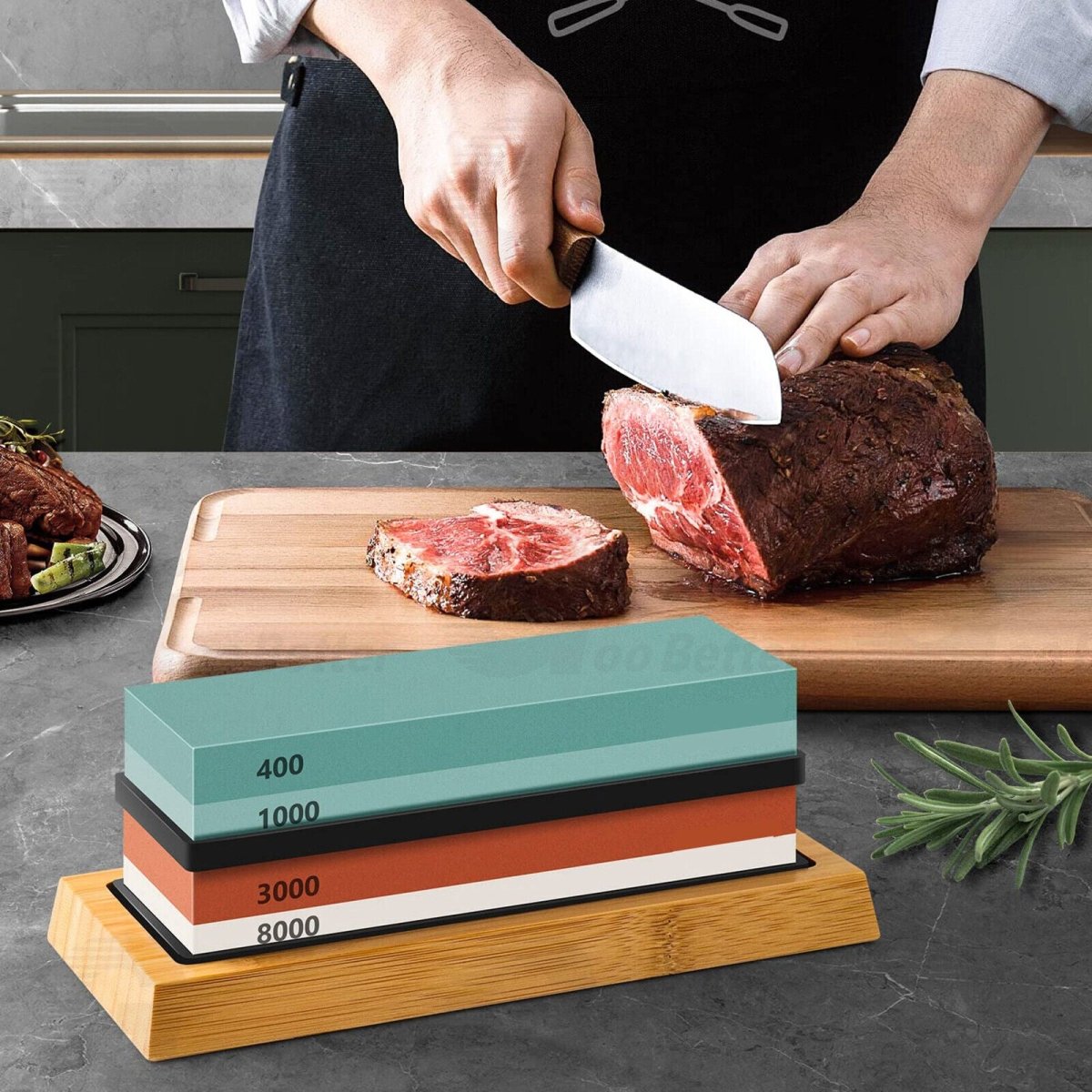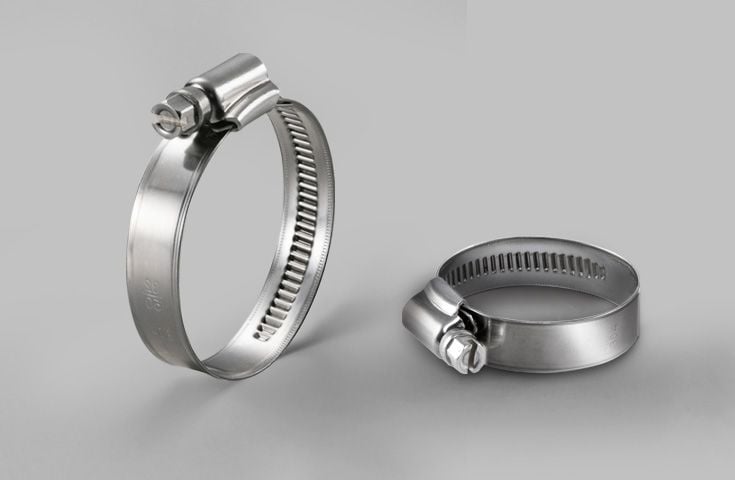1. ⚙️ What is an O-Ring?
An O-Ring is a torus-shaped elastomeric seal (a round cross-section "ring") designed to form a pressure-tight seal between two mating surfaces. O-rings are used where fluids or gases must be prevented from leaking — examples include hydraulic cylinders, fuel systems, plumbing faucets, and engine components.
Key characteristics:
- Designed for compressive sealing — seated in a groove and compressed by mating parts.
- Available in many elastomers (NBR, FKM/Viton, Silicone, EPDM, PTFE-coated variants).
- Critical properties: hardness (shore), compression set, chemical compatibility, temperature range.
Tip: O-rings are precision parts — using the wrong cross-section or material can produce leaks even when the hardware is correct.

2. 🛡️ What is a Rubber Grommet?
A Rubber Grommet is a flexible insert (often flanged) placed into a drilled hole to protect cables, pipes, or tubing from sharp metal edges, abrasion, moisture ingress, and vibration. The grommet’s lip or flange locks it into the panel and provides a cushioned passage for the wire or hose.
Primary functions:
- Protect cables or tubes from abrasion at the hole edge
- Reduce vibration transfer and noise
- Provide basic environmental sealing (dust/moisture exclusion) for panel penetrations
Grommets are the go-to choice for firewall wiring (hence firewall rubber grommet), control panels, junction boxes, and any application where a cable passes through a metal edge.

3. 🔍 Head-to-Head Comparison (O-Ring vs Rubber Grommet)
| Aspect | O-Ring | Rubber Grommet |
|---|---|---|
| Primary Purpose | Sealing fluid/gas at a joint | Wire/hose protection and hole finishing |
| Compression Use | Yes — designed to compress | No — designed to flex and isolate |
| Pressure Handling | High (with correct groove and material) | Low — not for pressurized sealing |
| Typical Materials | NBR, FKM (Viton), Silicone, EPDM | EPDM, Silicone, Neoprene, Nitrile |
| Installation | Installed in a groove between mating parts | Pushed into a hole in a panel — flange locks in place |
| Best For | Hydraulics, fuel systems, valves | Firewall wiring, cable harnesses, panel openings |
Short takeaway: use **O-rings** where fluid tightness is required; use **rubber grommets** where mechanical protection and insulation of entries matter.
4. 🧪 Materials & Environmental Performance
The selection of elastomer material is the single most important decision for both O-rings and rubber grommets. Below is a compact materials matrix to help you match service conditions (temperature, oils, UV, fuel exposure).
| Material | Typical Temp Range | Strengths | Typical Use |
|---|---|---|---|
| Nitrile (NBR) | -30°C to +120°C | Excellent oil & fuel resistance | Engine seals, fuel systems (O-rings) |
| Viton / FKM | -20°C to +200°C | Outstanding chemical & heat resistance | High temperature seals (O-rings) |
| EPDM | -50°C to +150°C | Excellent weather, ozone & steam resistance | Outdoor grommets, HVAC |
| Silicone | -60°C to +200°C | Excellent temp range & food compatibility | Medical, aviation seals/grommets |
Practical note: material choice for an O-ring focuses on chemical compatibility with the sealed fluid and compression set resistance; for grommets, abrasion resistance and UV/weather performance are often the priority.
5. 🧭 How to Choose Between an O-Ring and a Rubber Grommet
Ask these questions:
- Is your goal to stop a fluid leak? → O-ring
- Is your goal to protect cables/hose entries or reduce abrasion? → Rubber grommet
- Is pressure involved? If yes, pick an O-ring sized & specified to the groove and material requirements.
- Will the part see UV, salt, or outdoor exposure? Use EPDM or silicone for grommets; consider EPDM for outdoor grommets and Viton or Silicone for heat/chemical O-rings.
- Do you want reusability? Grommets are typically reusable; many O-rings are too — but check compression set before re-using in critical systems.
If you regularly do wiring or panel work, a rubber grommet kit with multiple diameters saves time and gives professional protection to every cable entry.
6. 🧰 Installation & Best Practices for Rubber Grommets
Correct installation increases service life. Here’s a step-by-step practical guide to install panel grommets cleanly:
- Measure hole diameter precisely. Grommet sizing typically references panel hole diameter — check manufacturer specs in your kit.
- Deburr the hole edge. Remove sharp edges with a file or deburring tool to prevent premature wear.
- Stretch & seat. Slightly compress the grommet and push one lip into the hole; then work the opposite lip through until the flange seats.
- Inspect fit. The grommet flange should sit flush, and the internal bore should be close to the cable OD.
- Use lubricant for tight fits. A water-based soap or silicone spray eases installation of tight grommets (avoid petroleum solvents that degrade some elastomers).
- Anchor & strain-relief. Where vibration or movement occurs, use zip ties or strain relief clamps to avoid side-loading the grommeted cable.
Pro tip: Keep a Rubber Grommet Firewall Hole Plug assortment in your toolkit — it prevents repeated trips back to the parts cabinet and produces consistently tidy wiring passes.

7. ⚠️ Common Failures & Troubleshooting
O-Ring Failures
- Compression set: Permanent deformation that reduces sealing force. Replace if the set exceeds specs.
- Extrusion/corrosion: O-ring extrudes into gaps at high pressure or is chemically attacked by incompatible fluids.
- Thermal degradation: Hardening, cracking, or swelling when exposed to temperatures beyond material limits.
Grommet Failures
- Abrasion or chafing: Wire movement against a non-flanged hole edge causes cuts, usually due to a missing grommet or the wrong size.
- UV cracking: Inadequate UV resistance causes brittleness outdoors (choose EPDM or UV-stabilized silicone).
- Compression deformation: Over-tight panel clamps or edge loads squeeze the grommet out of shape.
Quick fix checklist: check material compatibility, ensure correct sizing, deburr holes, and add strain relief where movement exists.
8. 📏 Standards & Common Sizes (Reference Table)
There are standard-size tables for O-rings (AS568 for imperial sizes) and common grommet hole/ID sizing guidelines. The table below shows typical grommet choices for panel holes and cable diameters.
| Panel Hole Ø (mm) | Typical Grommet Bore Ø (mm) | Typical Use |
|---|---|---|
| 3.0 | 1.5 - 2.5 | Small signal wires |
| 6.0 | 4.0 - 5.0 | Harness entries |
| 12.0 | 8.0 - 10.0 | Multi-core cable |
| 20.0 | 14.0 - 18.0 | Power cable/grommet pass |
The 200Pcs Rubber Grommet Firewall Hole Plug Set contains a broad assortment of sizes which map closely to these ranges and covers most common needs in automotive and electrical work.
9. 🧩 Real-World Use Cases & Mini Case Studies
Case Study A — Firewall Wiring, Classic Car Restoration
Problem: During a restoration, original firewall holes are rough and sharp. Running modern harnesses without protection led to chafing and intermittent shorts. Solution: Install correctly sized EPDM grommets from a rubber grommet kit and use braided loom and strain relief where the harness exits the grommet. Result: Wiring lasted through years of road use without insulation failure.
Case Study B — Small Medical Device (O-Ring vs Grommet)
Problem: A fluid connection developed slow leaks in a prototype chamber. The design had a through-panel wire and a nearby fluid port. The team initially tried a grommet near the fluid port. Solution: Use an O-ring sized to the port groove for the seal, and a silicone grommet for the wire pass-through. Result: Both issues solved — proper fluid sealing and cable protection.
These examples show the practical separation of roles — sealing vs protection — and why keeping both O-rings and grommets in your parts cabinet is a good practice.
10. ❓ Frequently Asked Questions
No. Grommets do not reliably seal pressure. They can prevent abrasion but not stop fluid under pressure.
Q2: Are grommets and O-rings interchangeable across materials?Not always. Material selection must match service conditions: fuel exposure, high temperature, UV, etc.
Q3: How tight should an O-ring be?Follow design specs: typical static compression is 10–30% of O-ring cross-section. Over-compression shortens the lifetime.
Q4: Do you recommend a kit?Yes — a Rubber Grommet Kit like the HomeDIYer 200Pcs set is ideal for workshops and field repairs.
11. ✅ Conclusion & Product Recommendations
In short: choose an O-Ring when you need a pressure-tight seal; choose a rubber grommet when you need to protect wires, pipes, or tubing passing through a hole. Both components are cheap and compact, yet using the correct one avoids costly failures.
Recommended: keep a few common O-rings (matching AS568 sizes or metric equivalents) and a Rubber Grommet Kit in your workshop or vehicle. The HomeDIYer kit includes many sizes and is a practical, budget-friendly choice for both pros and DIYers.
👉 Related Products (recommended)
- 200Pcs Rubber Grommet Firewall Hole Plug Set — assorted sizes for panel wiring & sealing
- Assorted O-Rings and Gaskets — keep common sizes on hand








